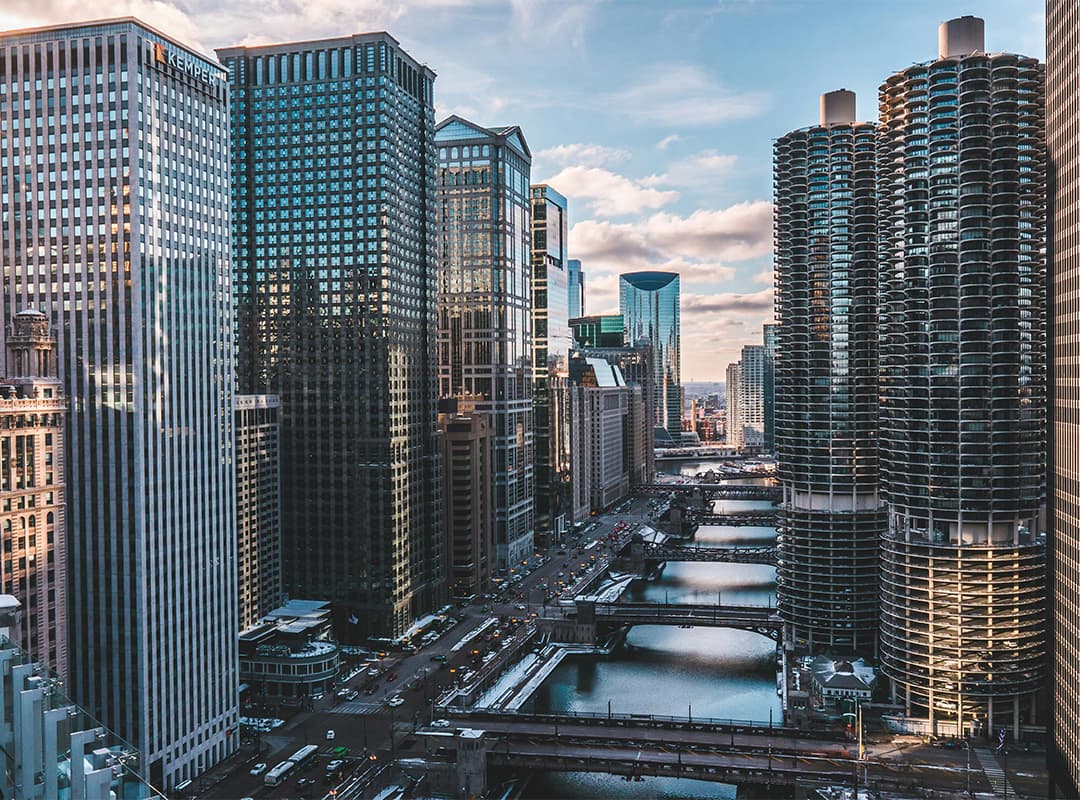Incorporated as a city in 1837, Chicago was ideally situated on the waterways of Illinois to take advantage of the trading possibilities driven by the nation’s westward expansion. The bend in the river, which now creates the south and west boundaries of River North, is historically significant in the development of early Chicago. This area was the location of Chicago’s first three taverns, its first hotel (the Sauganash Hotel), its first ferry, its first drug store, and the first bridges across the Chicago River. Recognition of early settlers in the River North area is reflected in the names of its streets – Hubbard, Kinzie, Taylor, Clybourn, and Noble, to name a few.
After The Chicago Fire
Like much of downtown Chicago, River North was rebuilt after the Chicago Fire of 1871. The area quickly filled with municipal buildings, worker housing, warehouses, and shipping facilities to serve the Port of Chicago. In the 1890s, after railroad tracks were laid along the north bank of the Chicago River, industry moved in. The area became known as “Smokey Hollow” due to the numerous factories and forges producing smoke so thick that sunlight was often obscured. At the time, Smokey Hollow was a major transportation hub, with railroad tracks linking the ports along the Chicago River to the surrounding areas.
However, from the 1920s through the 1960s, the port relocated, the economy declined, and the neighborhood lost its industrial purpose, gaining notoriety as Chicago’s red-light district.
Building Up
The first signs of change emerged in 1964 when the two Marina City condominium towers opened on the north side of the river at State Street. However, complete revitalization was still years away. By the mid-1970s, River North had become an urban wasteland with many neglected or abandoned buildings.
Then the revival began. Low real estate prices and large spaces attracted artists and creative entrepreneurs. They moved in and started the reclamation process. Historic buildings were repurposed into new galleries, studios, offices, apartments, restaurants, and shops. Lofts from the 1890s to the 1920s attracted lawyers, architects, advertising agencies, design firms, and other businesses. The area got its name from Chicago real estate developer Albert Friedman, who in the 1970s aimed to rebrand the somewhat seedy area. Renaming the community “River North” worked wonders!
From its beginnings as the home to Chicago’s first taverns and hotel to now, River North continues to house the highest concentration of restaurants and entertainment venues in the city. The vibrant, energetic neighborhood of River North is cultured by day and lively by night. The people who live, work, and visit this area know how to work hard in its businesses and then enjoy the festive nightlife. River North defies simple categorization and offers something for everyone!
